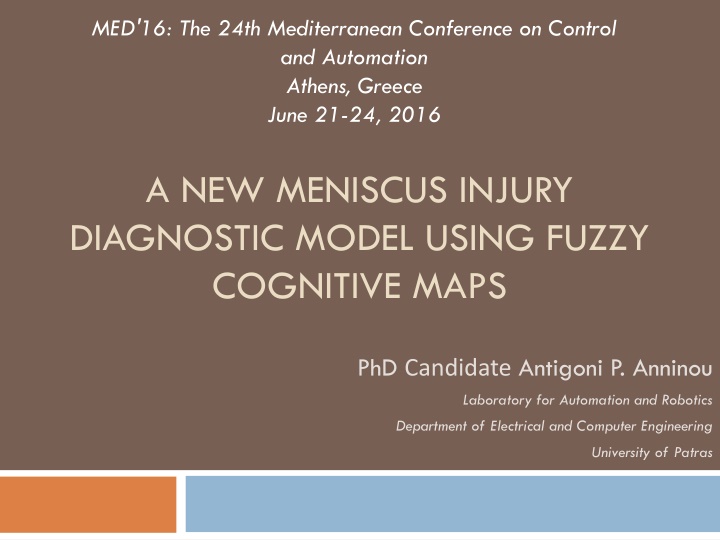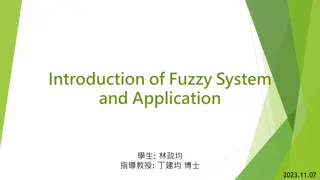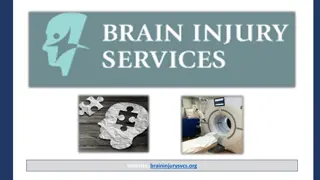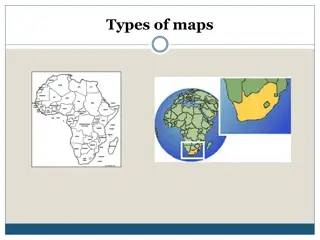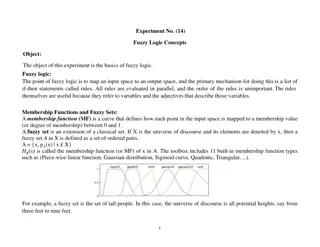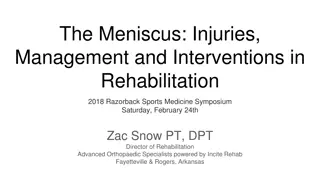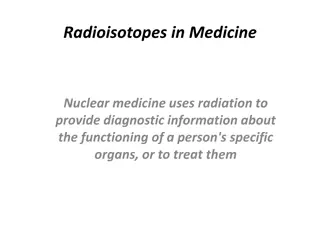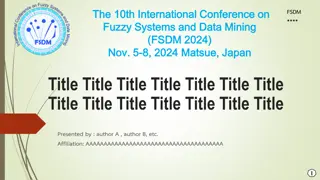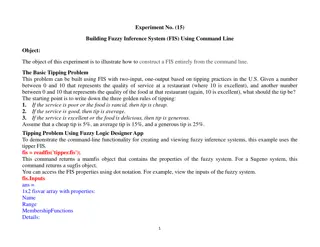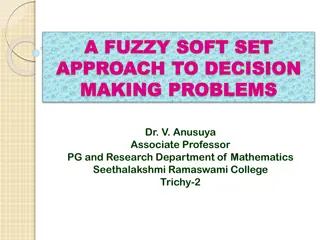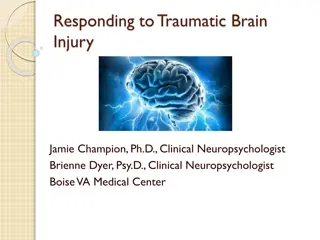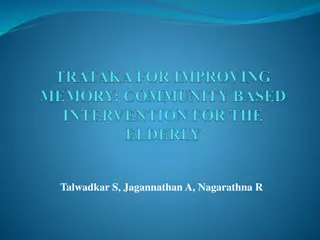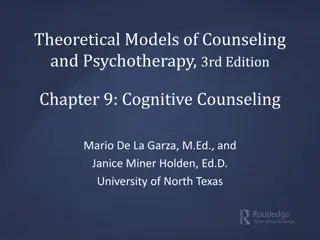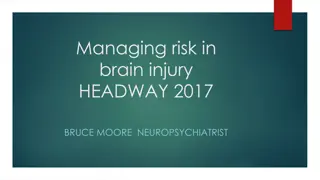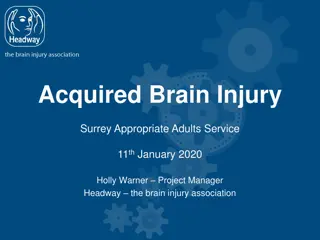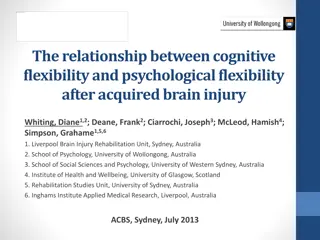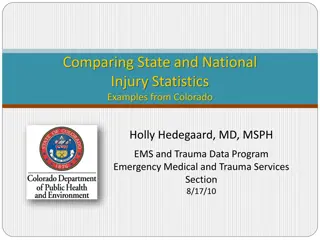A NEW MENISCUS INJURY DIAGNOSTIC MODEL USING FUZZY COGNITIVE MAPS
PhD Candidate Antigoni P presents a novel diagnostic model for meniscus injuries at the MED'16 conference in Athens, Greece. The model utilizes Fuzzy Cognitive Maps to enhance accuracy in diagnosing such injuries, offering potential advancements in medical assessments.
Uploaded on Mar 01, 2025 | 1 Views
Download Presentation

Please find below an Image/Link to download the presentation.
The content on the website is provided AS IS for your information and personal use only. It may not be sold, licensed, or shared on other websites without obtaining consent from the author.If you encounter any issues during the download, it is possible that the publisher has removed the file from their server.
You are allowed to download the files provided on this website for personal or commercial use, subject to the condition that they are used lawfully. All files are the property of their respective owners.
The content on the website is provided AS IS for your information and personal use only. It may not be sold, licensed, or shared on other websites without obtaining consent from the author.
E N D
Presentation Transcript
MED'16: The 24th Mediterranean Conference on Control and Automation Athens, Greece June 21-24, 2016 A NEW MENISCUS INJURY DIAGNOSTIC MODEL USING FUZZY COGNITIVE MAPS PhD Candidate Antigoni P. Anninou Laboratory for Automation and Robotics Department of Electrical and Computer Engineering University of Patras
Authors Anninou P. Antigoni, Ph.D Candidate, Laboratory of Automation and Robotics, Department of Electrical and Computer Engineering, University of Patras Poulios Panagiotis, Orthopaedic Clinic, Department of Medicine, University of Patras,Greece Groumpos P. Peter, Professor, Laboratory of Automation and Robotics, Department of Electrical and Computer Engineering, University of Patras Gkliatis Ioannis, Assistant Professor, Orthopaedic Clinic, Department of Medicine, University of Patras, Greece
Acknowledgements Elpiniki I. Papageorgiou E.I. Papageorgiou, & P.P. Groumpos, Optimization of Fuzzy Cognitive Map model in Clinical Radiotherapy Through the Differential Evolution Algorithm ,Biomedical Soft Computing and Human Sciences, Vol. 9, No. 2, 2004, pp. 25-31 Chrysostomos D. Stylios Stylios, Chrysostomos D., and Petros P. Groumpos. "Modeling complex systems using fuzzy cognitive maps." IEEE Transactions on Systems, Man, and Cybernetics-Part A: Systems and Humans 34.1 (2004): 155-162 George Georgoulas Papageorgiou, E., Georgoulas, G., Stylios, C., Nikiforidis, G., & Groumpos, P. (2006, October). Combining fuzzy cognitive maps with support vector machines for bladder tumor grading. In International Conference on Knowledge-Based and Intelligent Information and Engineering Systems (pp. 515-523). Springer Berlin Heidelberg
Layout Aim Meniscus Injury-Diagnostic Procedure Diagnostic Model Construction Using Fuzzy Cognitive Maps Case Studies Discussion of the Results Conclusions Future Research 4
Aim Create an integrated meniscus injury diagnostic model, which by exploiting information about patient history and clinical examination made by physicians concludes to a final diagnosis using Fuzzy Cognitive Maps
Meniscal Tears One of the most common knee disorders Evaluation Method MRI Advantage: Accurate Results Disadvantages: Expensive Diagnostic Tool Significant amount of false positive results regarding medial meniscus pathology Cornerstones of Diagnosis Detailed history Physical Examination Disadvantage: Ambiguous outputs
Solution Need for a different perspective Proposal: The advanced modelling methodology of Fuzzy Cognitive Maps
Fuzzy Cognitive Maps (FCM) Modeling particular domains method for describing Fyzzy-graph structures for representing causal reasoning
Fuzzy Cognitive Maps Nodes: concepts or variables Represent the system s Arrows: nodes. relationship between them. Interconnection Show between cause-effect the W: Weight between two nodes: W>0 positive causality W<0 negative causality W=0 no relationship 9
Fuzzy Cognitive Maps The value of each concept at every simulation step is calculated, computing interconnected concepts to the specific concept, by applying the following calculation rule: the influence of the
Fuzzy Cognitive Maps Ai(k+1): the value of the concept Ciat the iteration step k+1 Ai(k): the value of the concept Cjat the iteration step k Wij : the weight of interconnection from concept Ci to concept Cj k1: the influence of the interconnected concepts in the configuration of the new value of the concept Ai k2: the proportion of the contribution of the previous value of the concept in the computation of the new value f : the sigmoid function
Competitive Fuzzy Cognitive Maps (CFCM) The output nodes of a FCM used in decision- making, in many cases, must "compete" against each other in order for only one of them to dominate and be considered the correct decision In order to achieve this "competition", the interaction of each of these nodes with the others should have a very high negative weight. This implies that the higher the value of a given node, the lower the value of competing nodes 12
Diagnostic Procedure and Methods Patients with knee injury initially arrived at the Accident and Emergency Department or general practitioner Were referred to either the next available trauma clinic or the next available weekly specialist knee clinic Complete a copy of Tegner Lysholm Knee Scoring Scale and a Knee Injury and Osteoarthritis Outcome Score (KOOS) History and physical examination
Physical Examination Results Extracted and translated in Fuzzy Control Language Convert natural language into fuzzy sets Fuzzy sets yield other fuzzy propositions Converting the final fuzzy sets into statements in natural language with deffuzification method
Possible Mechanisms of Injury Possible Mechanisms of Injury Clinical Examination Results (Tests)
Risk Factors Acute Meniscal Tears Degenerative Meniscal Tears
Diagnostic Procedure-First Level Collect Mechanisms of Injury and Symptoms Construct FCM Model according to experts Output: FCM Equation Transform to fuzzy variable (low, medium, high) 1. 2. 3. 4.
Diagnostic Procedure-First Level Test Results 5. Fuzzy Rules: 6. IF Meniscal Tear is LOW THEN the patient does not suffer from meniscal tear regardless test results IF Meniscal Tear is Medium AND one or more tests from the list: T1, T2, T3, T4, T5, T6 are positive THEN the patient suffers from meniscal tear IF Meniscal Tear is Medium AND only test T7 is positive THEN the patient does not suffer from meniscal tear IF Meniscal Tear is High THEN the patient suffers from meniscal tear regardless test results OUTPUT: Meniscal Tear on not 7.
Diagnostic Procedure-Second Level Collect Risk Factors Construct CFCM Inputs: Risk Factors Outputs: Acute Injury Degenerative Injury Negative High weights between outputs (-1) Positive high weight to acute injury when risk factors R12 to R17 do not exist Output: Highest Value
Case Studies Data collected by 20 Patients
1stPatient-1stLevel Mechanisms: M3, M7 Symptoms: C1, C4, C6, C7, C11 First level Output Fuzzy Variable HIGH Meniscal Tear regardless test results
1stPatient-2ndLevel Risk Factors: R1, R4, R5, R6, R7, R8, R10, R11 Second Level CFCM Output Degenerative Injury
Discussion of Results The whole procedure from the time that damage happened to patient to the point that final diagnosis must be decided, is being simulated All patients suffered from meniscal tears Inonly two cases we had to check the examination results according to fuzzy rules Weights decision is crucial Competitive FCM lead to one final diagnosis Simulation results from real patients MRI results evaluate the decision Physicians found them very satisfactory
Conclusions Accurate tool Detection of meniscal tear Distinguishing between acute and degenerative injury Good feedback from patients Exploitation of experts knowledge and experience Method Fast Simple Cost effective
Future Research More patients and clinical data Model evaluation Learning algorithms Real time clinical use User friendly software tool
Thank you for your attention Antigoni P. Anninou Email: anninou@ece.upatras.gr
